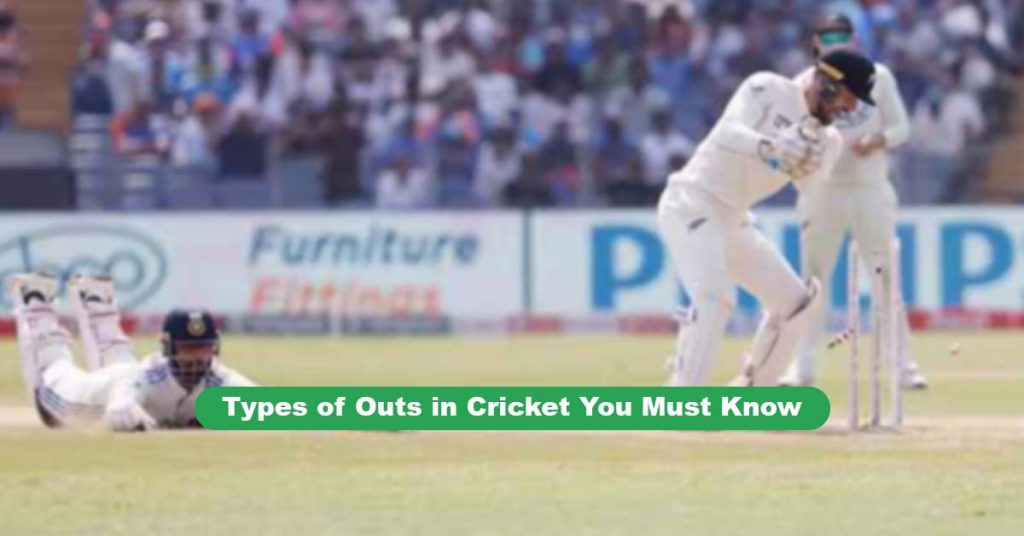In cricket, a batter’s journey at the crease can end in 10 unique ways. While some dismissals, like being bowled or caught out, are common, others like timed out or obstructing the field are rare. An “out” signifies the end of a batter’s turn, allowing the next in line to take their place. Once a team loses 10 wickets, it’s considered “all-out,” signalling the conclusion of the innings.
Below, we explore the 10 types of outs in cricket, their significance, and some memorable examples from cricket history.
Types of Outs in Cricket: An Overview
| Type | Description |
|---|---|
| 1. Bowled | The ball is caught by a fielder without touching the ground after hitting the bat. |
| 2. Caught | The batter is out if the ball hits any part of their body (excluding the bat/gloves) in line with the stumps. |
| 3. Stumped | The ball directly hits the stumps, dislodging the bails. |
| 4. Leg Before Wicket (LBW) | The batter fails to reach the crease before the wickets are broken. |
| 5. Obstructing the Field | Batter interferes with fielders or distracts them intentionally. |
| 6. Run-Out | The incoming batter takes too long to arrive at the crease. |
| 7. Timed Out | The batter accidentally hits their stumps with the bat or body. |
| 8. Hit Wicket | The batter voluntarily leaves the field without umpire intervention. |
| 9. Retired Out | The batter intentionally hits the ball twice in one delivery. |
| 10. Hit the Ball Twice | Batter intentionally hits the ball twice in one delivery. |
1. Bowled Out

Perhaps the most satisfying dismissal, a batter is bowled when the ball evades their bat and body, striking the stumps directly. Even if the ball deflects off a batter’s body or equipment, it is still considered bowled.
2. Caught Out

A batter is caught out when a fielder cleanly catches the ball off the bat without it touching the ground. Variations include:
- Caught Behind: The ball is caught by the wicketkeeper.
- Caught and Bowled: Bowler catches the ball during their follow-through.
Example: Amy Jones of England showcased her brilliance by catching Amelia Kerr in a thrilling match.
Read More:- Top 50 Highest Test Wicket Takers in Cricket History
3. Leg Before Wicket (LBW)
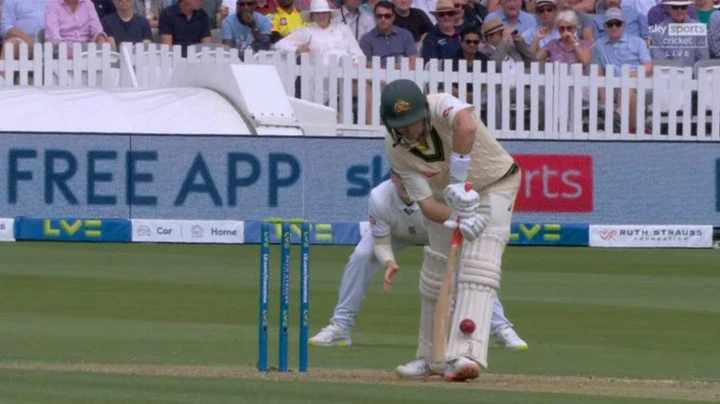
LBW is one of cricket’s most debated dismissals. A batter is given out if the ball, pitched in line with the stumps, strikes their body and would likely have hit the stumps if not obstructed. Umpires often rely on technology, such as ball-tracking, to make decisions.
4. Run-Out

Run-out occurs when a batter fails to make it back to their crease before the opposition breaks the stumps. It’s a common dismissal during tight single or double runs. Modern cricket heavily relies on the third umpire for these decisions.
5. Stumped

A batter is stumped when the wicketkeeper removes the bails before they can return to the crease after stepping out. This dismissal is common against spin bowlers who lure batters out of their crease.
6. Retired Out

Unlike being retired hurt, a batter is considered retired out when they voluntarily leave the field without umpire intervention. This rare dismissal was famously seen in IPL 2022 when Ravichandran Ashwin became the first batter to be retired out.
7. Hit Wicket
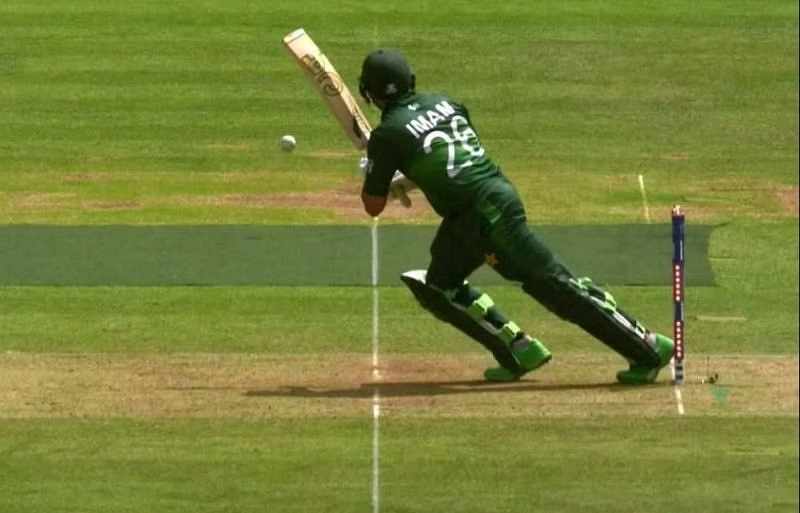
A hit wicket occurs when a batter accidentally dislodges the bails with their bat, foot, or body while playing a shot. A memorable instance was Kevin Pietersen’s unusual dismissal during an England vs. West Indies match when a bouncer caused his helmet to hit the stumps.
8. Obstructing the Field
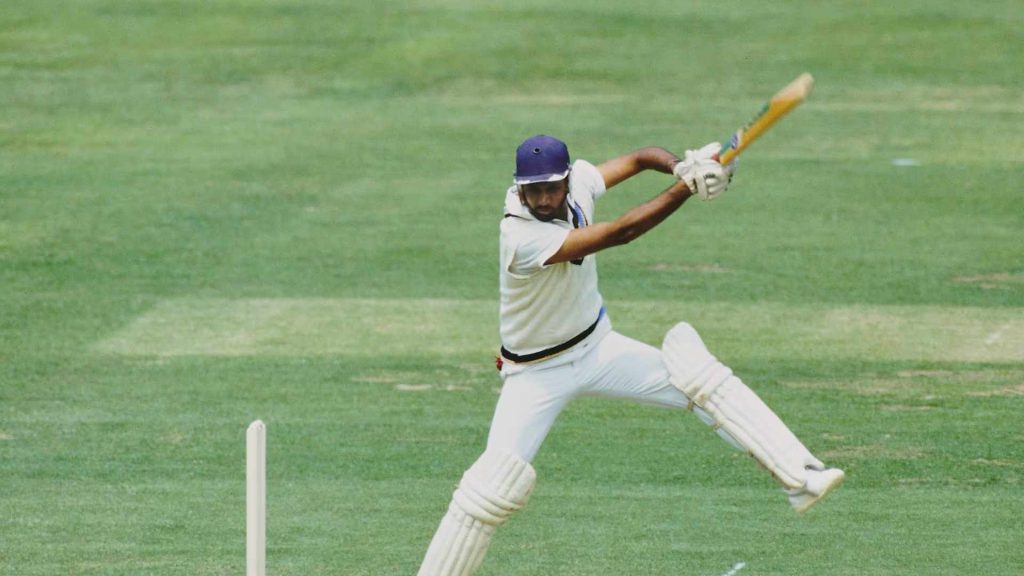
This dismissal happens when a batter intentionally interferes with the opposition’s fielders. It is rare but has been seen in various formats. Notably, England’s Len Hutton was dismissed for obstructing the field against South Africa in a Test match.
9. Timed Out
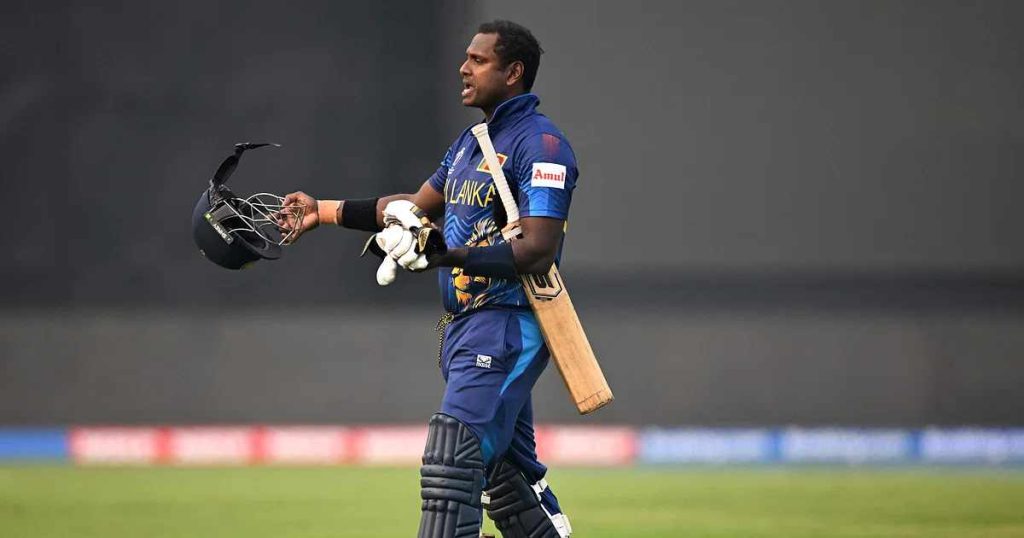
A batter must arrive at the crease within the allotted time after the previous dismissal or the innings break. Failure to do so results in a timed-out dismissal. Angelo Mathews became the first player to be timed out during the 2023 ODI World Cup against Bangladesh.
10. Hit the Ball Twice

A batter is given out if they intentionally strike the ball twice during a single delivery. While the first strike is legal, any additional intentional hits are not allowed. This dismissal is extremely rare and has not been seen in Test cricket.
Conclusion
Each type of out in cricket adds depth and drama to the game, highlighting the tactical interplay between batters and bowlers. From the most common dismissals like caught out and bowled to rare instances like timed out, cricket’s rules ensure every game remains unpredictable and exciting.
For more interesting articles and updates on cricket, stay tuned to E2bet.
Read More:- Who’s the Best Fielder in the World?

